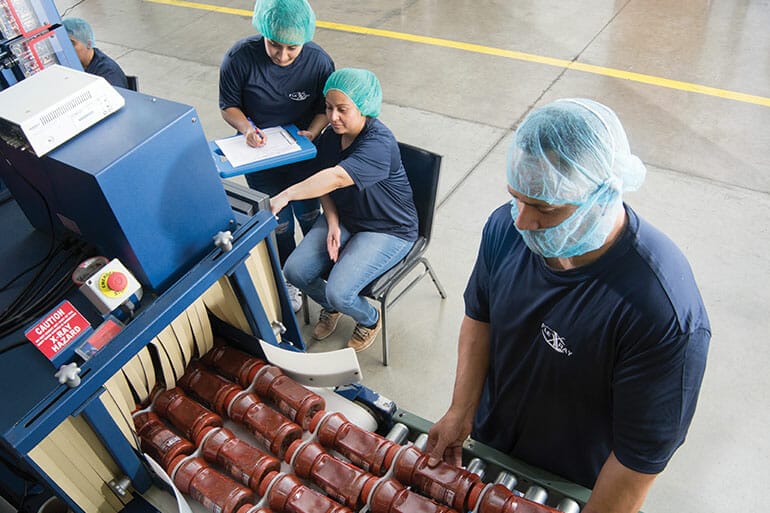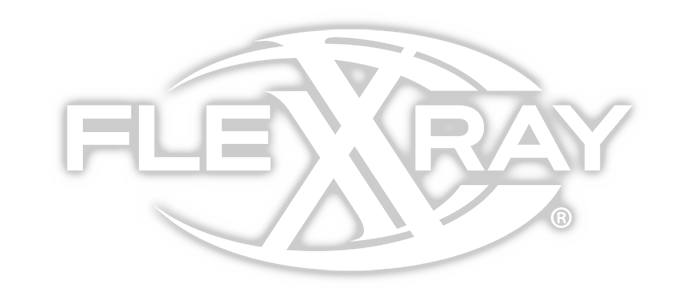
With 600 million people around the world affected by contaminated food each year, it’s crucial for food manufacturers to have a Hazard Analysis Critical Control Point (HACCP) plan in place to help prevent contamination.
It’s also essential for production facilities to ensure they’re working with vendors and suppliers that are HACCP-compliant. Knowing that products, equipment and even uniforms are handled and monitored properly guarantees that contamination risks aren’t being passed along to the food supply.
HACCP Principles
Being able to achieve the seven principles of HACCP begins with having programs and policies in place to establish a culture of food safety that is prioritized by every employee.
The seven principles are:
No. 1: Conduct a hazard analysis. This involves being able to identify any hazards to food safety in manufacturing. It’s crucial to have a plan to prevent chemical, physical or biological contamination.
No. 2: Determine the critical control points (CCPs). Look at the points in the manufacturing process that could endanger food safety. Hazards should be identified and managed.
No. 3: Establish critical limits. CCPs need to have critical limits with maximums and minimums. Breaks in the limits must be managed.
No. 4: Establish monitoring procedures. This is a monitoring standard that deals with guaranteeing that all CCPs are notated. They must be observed for changes that could lead to a risky situation. Critical limits must be watched as well.
No. 5: Establish corrective actions. Establish a plan for corrective actions that need to be taken if a hazard appears at a CCP. Corrective action should be immediate in order to protect against illness or injury to humans.
No. 6: Establish verification procedures. Come up with procedures to make sure that HACCP is upheld. Employees must be able to verify which procedures they need to follow.
No. 7: Establish record-keeping and documentation procedures. The food manufacturing facility needs to have a record of their HACCP plan, CCPs and critical limits. It’s important to document corrective action as well.
Let’s look at six prerequisites manufacturers should have in place to create an environment that supports HACCP at their facility and how working with compliant vendors can further ensure the safety of your food product.
Ways to Improve Food Manufacturing Safety
No. 1: Follow Good Manufacturing Practices (GMP)
These are operational requirements that are needed to ensure a safe environment for food production, and the Code of Federal Regulations is very clear on what constitutes GMPs. Making sure that proper attire is worn in the facility, only blue or black indelible ink is used, hair and beard nets are worn on the floor and other operational conditions and procedures are upheld are all part of maintaining GMPs. These seem basic, but strict adherence is the foundation to building a strong food safety culture.
No. 2: Establish Hand Washing Facilities
In food manufacturing facilities, an emphasis on hand washing can help control contamination. It’s so important that it’s cited by the FDA Food Code as one of the top five ways to protect public health. Ensuring that proper hand washing procedures are followed and making sure hands are washed in accordance with the Food Code (after using toilet facilities, after eating/drinking, after coughing or sneezing, etc.) is instrumental in creating a culture of food safety.
As part of maintaining stringent guidelines toward hand washing, the facility must provide all the proper signage to reinforce the message. They need to make sure there is sufficient soap and paper towels available at a designated hand washing sink or automated hand washing station. Frequent testing to ensure proper wash temperatures are met is also imperative.
No. 3: Enforce Pest Control
Any environment that has significant amounts of food, whether it’s a restaurant or a manufacturing facility, is going to be a magnet for pests. Ranging from rodents to birds to insects and bugs, pests often bring with them harmful bacteria that can cause widespread illness if it enters the food supply.
The most effective pest control starts with an outside-in approach; being diligent about exterior management and building inward through a robust master sanitation plan. Adhere to a Master Cleaning Schedule (MCS) so that garbage, debris or spilled product won’t attract unwanted pests.
No. 4: Write Communicable Disease Policies
Making it clear under what circumstances employees can be at work is crucial in maintaining food safety. Individuals with open sores, a fever or signs of infection are prohibited from working around food, as are people who have been diagnosed with conditions like E. Coli, Hepatitis A and Norovirus.
Revisit this policy frequently and ensure you are diligent about preventing these types of risks from contagious employees. It is also important for productivity and attendance to ensure that these policies are followed.
No. 5: Come Up with Established Documentation
Writing down your HACCP plan for CCPs, critical limits and corrective action will ensure that employees understand their roles in your facility. Train employees on the HACCP plan, and keep it in a place where employees can access it at all times. Managers must know the HACCP plan so they can determine if employees are following it and take corrective action when necessary.
No. 6: Conduct a Hazard Analysis
Identify any points in the manufacturing process where a bacterial, physical or chemical contamination could occur. Analyze potential chemical hazards like allergens, shellfish toxins, pesticides, fertilizers, food additives and lubricants, physical hazards like metal, glass, wood and stones and bacterial hazards like Salmonella spp. and Noroviruses. Then, determine the likelihood that a contaminant would occur, along with how severe the effects of a hazard would be. The goal is to figure out which hazards pose significant potential risks to customers.
{{cta(‘803facbf-161b-46af-ad5f-096fd29ef09f’,’justifycenter’)}}
Working with HAACP-Compliant Vendors
Making sure that you work with only HACCP-compliant vendors and suppliers further reduces your risk of food contamination. Developing a detailed, well-written supplier verification program can help ensure the safety of the ingredients and products entering your facility.
FlexXray follows all HACCP principles to create the safest environment possible for your food products. Even though product is never opened in the warehouse or exposed to elements outside of its packaging, we maintain the kind of strict standards found in a food manufacturing environment.
Our site security includes practices such as incoming material verification and security on all doors. These practices ensure that nothing is entering our facility that could jeopardize the cleanliness of our environment and the safety of the food products we’re entrusted.
Customers sometimes ask if we are GFSI certified, and the answer is currently no. We are working to ensure a successful implementation in the future but we don’t “fit” as a food storage and distribution center because we don’t “possess” or maintain inventory of the product. We are a loop for your own food safety processes to ensure that you have the cleanest possible product to ship to your customers.
However, the fact that we don’t fit the GFSI scheme hasn’t stopped us from working to create a facility that meets and exceeds those requirements. In doing so, we have developed an environment that clients can be completely confident in. When working with FlexXray, they know that their product will be handled with the same kind of care they use in their own facility to ensure the highest possible level of safety.

Leave a Reply
You must be logged in to post a comment.